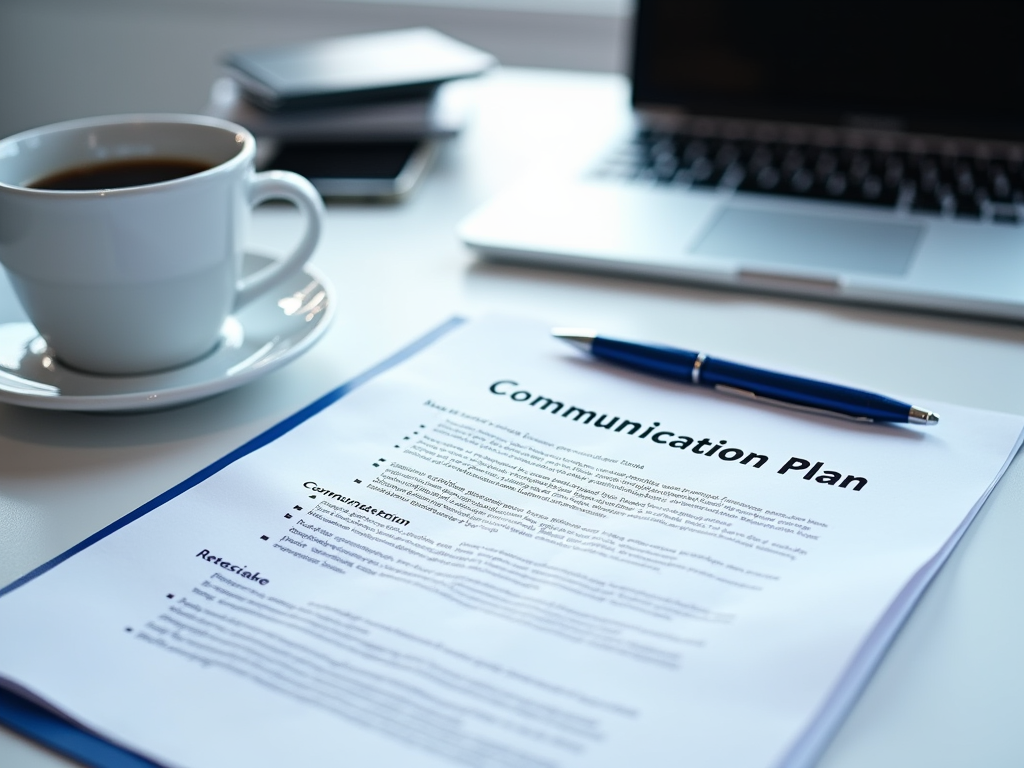Writing a communication plan may seem like a daunting task at first, but a well-thought-out strategy can radically improve how information is transmitted within your organization. In a world overflowing with complex messaging and varying stakeholder interests, clarity is paramount. Without a structured approach, essential messages may get lost, causing confusion, inefficiency, and even damage to your organization’s reputation. By mastering how to craft an effective communication plan, you can ensure your team is aligned, engaged, and informed. From identifying your target audience to choosing the right channels, this guide will empower you with the tools necessary for success.
A communication plan serves as the roadmap that guides how information flows within an organization, ensuring that everyone is on the same page. It defines the ‘what,’ ‘who,’ ‘how,’ and ‘when’ of your messaging to deliver timely and relevant content. In addition, a well-structured communication plan not only drives engagement but also aligns with organizational goals, enhancing overall performance. This article will delve into the essential components of a communication plan, including a useful template to kickstart your journey towards effective communication.
What is a Communication Plan?

A communication plan is a strategic document that outlines an organization’s communication goals, messages, audiences, and methods. It serves as a foundation for consistent messaging across various channels, enabling effective engagement with stakeholders. With a clearly articulated communication plan, organizations can foster better collaborations, improve transparency, and enhance overall organizational cohesion. Moreover, effective communication facilitates quicker decision-making, leading to increased productivity and effectiveness in achieving organizational objectives.
Key Components of an Effective Communication Plan

Every impactful communication plan must incorporate several fundamental elements that support its effectiveness. At its core, a communication plan should encompass clearly defined goals and objectives, an understanding of target audiences, appropriate communication channels, and a timeline that maps out critical activities.
Goals and Objectives
Setting specific goals and measurable objectives forms the backbone of an effective communication plan. This ensures that all messaging aligns with the broader organizational mission. Clear objectives also allow teams to measure success. Some common goals include:
- Improving employee engagement.
- Enhancing brand awareness.
- Increasing customer satisfaction.
- Facilitating organizational change.
Target Audience
Understanding who your audiences are is crucial. A well-defined target audience enables tailored messaging that resonates. To identify your audience, consider factors such as demographics, preferences, and needs. Here is how to segment your audience:
- Internal vs. external audiences.
- Stakeholders such as management, employees, clients, and partners.
- Demographic information like age, location, and job role.
Channels of Communication
Choosing the right channels for communication plays a vital role in how effectively information is conveyed. Various options exist, including:
- Email: Efficient for formal communication.
- Social Media: Great for engaging a wider audience.
- Internal Meetings: Beneficial for in-depth discussions.
- Newsletters: Ideal for regular updates.
| Channel | Benefits | Best For |
|---|---|---|
| Direct communication, easily documented | Formal announcements | |
| Social Media | Wide reach, interactive engagement | Brand promotions |
| Meetings | Facilitates discussion, immediate feedback | Strategic planning |
| Newsletters | Keeps stakeholders informed, consistently updates | Monthly or Quarterly updates |
How to Create a Communication Plan
Creating a communication plan is a structured process that requires thorough evaluation and strategic development. It is essential not to rush through the steps, as each one contributes to the effectiveness of the overall plan.
Step 1: Assess Your Current Communication
Before implementing a new communication strategy, it’s crucial to evaluate existing communication efforts. Identify strengths and weaknesses in current practices, as this will provide a foundation for improvement. Engaging in stakeholder feedback can shine a light on any gaps that may exist. Additionally, understanding what works well can help you build upon successes as you move forward.
Step 2: Develop Your Strategy
Once you’ve evaluated your current communication, the next step is to develop a strategy that aligns with your established goals and objectives. Be specific about the messages you want to convey and how they align with both your audience’s interests and your organization’s mission.
Step 3: Implement Your Plan
Rolling out the communication plan demands careful execution. In this phase, it is essential to maintain flexibility and readiness to adapt to unforeseen challenges. Regular monitoring helps ensure your messaging resonates with audiences effectively. Engaging stakeholders in this phase can foster a culture of openness and collaboration.
Step 4: Evaluate and Adapt
Lastly, periodic evaluation of the communication plan is vital. Review performance metrics to determine if the objectives are being met. Based on the data collected, adjust strategies as needed. It is beneficial to engage your audiences in providing feedback, ensuring continuous improvement in your communication efforts.
Template for a Communication Plan
To assist you in creating your own communication plan, we’ve developed a customizable template. This document includes sections for goals, audience analysis, channels, and evaluation metrics. By utilizing it, stakeholders can ensure all relevant elements are covered, leading to a comprehensive communication strategy.
Conclusion
To sum up, an effective communication plan is indispensable for any organization aiming for transparency and improved efficiency. By taking the time to define goals, identify target audiences, and choose the appropriate communication channels, you position your team for success. Moreover, this foundational tool not only enhances internal efficiency but also positively impacts your external relationships. Proper implementation and continual evaluation can lead to a more engaged organizational culture, ultimately driving better results.
Frequently Asked Questions
- What is the purpose of a communication plan? A communication plan is designed to guide communication efforts, ensuring messages are consistent and effective for various stakeholders.
- Who should be involved in creating a communication plan? Involvement from key stakeholders, including management, marketing, and communication teams, is crucial to developing a comprehensive plan.
- How often should a communication plan be updated? It is advisable to review and update the plan at least annually or whenever significant organizational changes occur.
- Can a communication plan be used for crisis management? Absolutely, a communication plan is critical for ensuring clear and timely messaging during crisis situations.
- What tools can help in creating a communication plan? Various project management software, templates, and collaboration platforms can assist in the development and execution of an effective communication plan.
![How to Write an Effective Communication Plan [+ Template]](https://thebox-marketing.nl/wp-content/uploads/image785c7611e63144dd8766f2706930a0a0.png)




